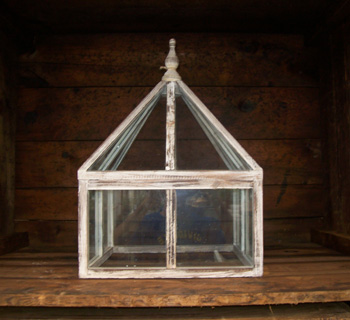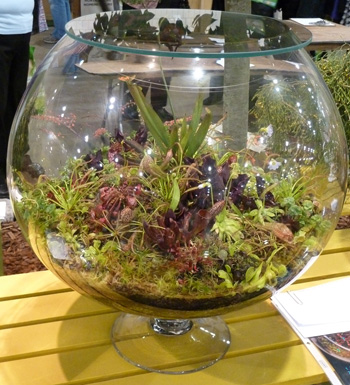Terrariums

A terrarium is a closed system, typically filled with small plants that thrive in humid conditions. Terrariums are ideal for growing and displaying miniature plants that do not flourish in the normal home setting. With a little effort and research, terrariums provide a unique and attractive way to grow plants with minimal care.
Credit for the terrarium is given to Dr. Nathaniel Bagshaw Ward, a 19th-century physician and plant enthusiast. The discovery came accidentally when Ward, in an attempt to study and observe metamorphosis in a bottle, noticed a small fern had germinated. Previous attempts to grow ferns outdoors in London’s polluted air had failed miserably. Ward observed the fern for 4 years during which not a single drop of water was added.
Ward published his findings in On the Growth of Plants in Closely Glazed Cases. This led to the creation of the “Wardian Case.” The large, enclosed containers enabled foreign, tropical plant material to survive long distances. Today, Ward’s principle is used in small ornamental versions of the Wardian case.

Martha Miller glass container terrarium. photo credit: J. Coceano
Now, the options for terrarium construction are limitless. As long as the container is clear and allows light in, almost any container may be used: fish bowl, glass vase, jug, jar, or bottle. Plant choices are also plentiful. Terrariums are not only attractive, but provide educational opportunities as well. They are ideal for teaching the water cycle and introducing any age to the joys of the plant world. Sign up today for the Terrarium workshop at the Scott Arboretum on Saturday, April 16th. Attendees will be supplied with materials to construct a terrarium of their own.





No Comments